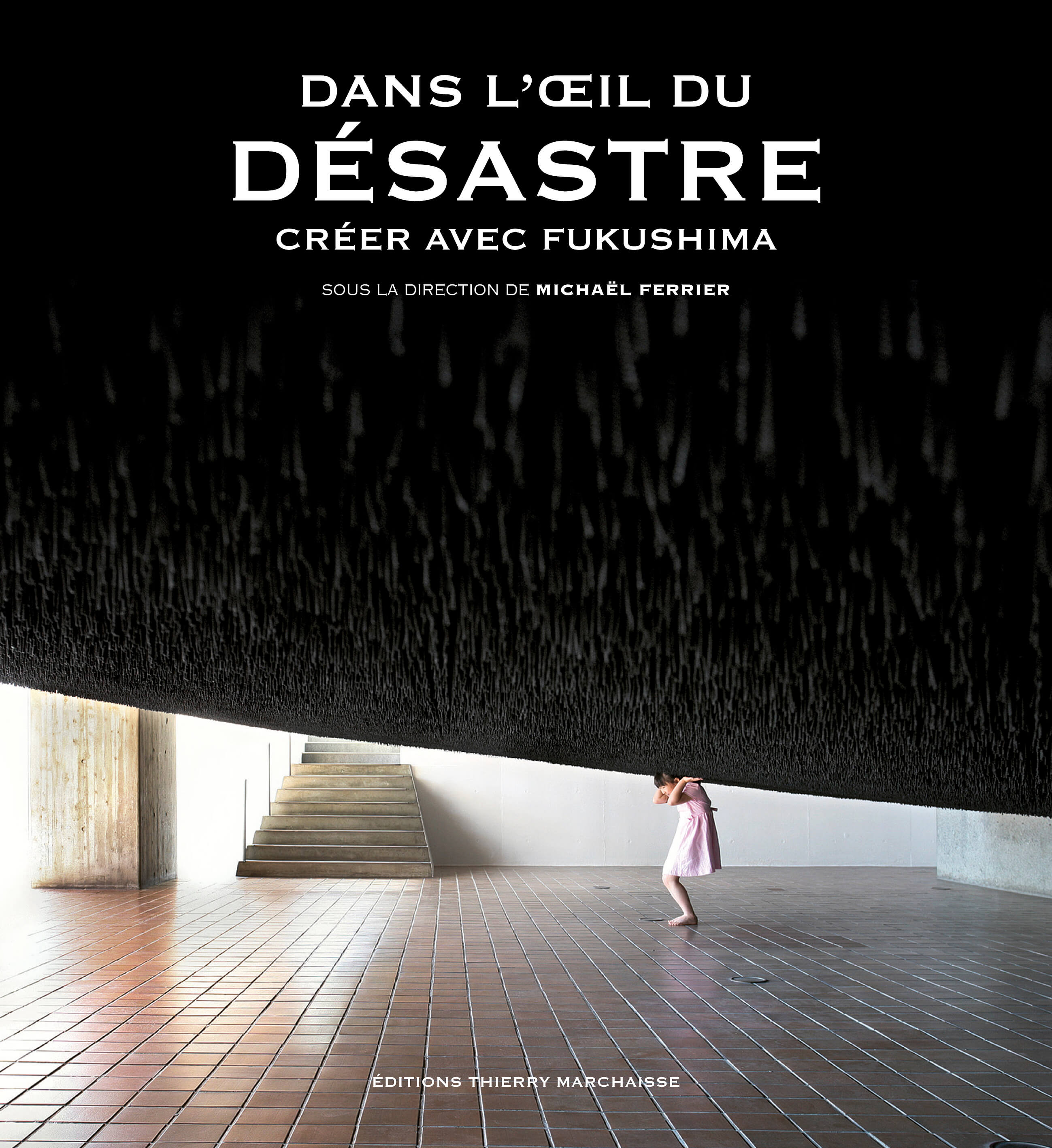Art After Fukushima
French and Japanese artists discuss the impact the 2011 catastrophe has had on their practice in the book 'The Eye of the Storm.'

© Editions Thierry Marchaisse
‘It wasn’t just the ground that was shaken when the earthquake hit; it marked a real shaking up of values. Fukushima therefore enabled people to look within themselves but also to look at the world. What have we done with this world? What is this?’ This declaration was made by Michaël Ferrier, who contributed to and edited the book Dans l’oeil du désastre, créer avec Fukushima (‘The Eye of the Storm: Art in the Time of Fukushima’), on the radio channel France Culture in March 2021.
In this book, the writer, professor at Chuo University in Tokyo and director of the research group ‘Figures de l’étranger’, reflects on the disaster that struck on 11 March 2011 and its cultural, political, and artistic implications. To do this, he brought together ten Japanese artists, photographers, filmmakers, painters, performers, and playwrights and their French counterparts, to explore the effect of the catastrophe on their artistic practice and the changes it brought about. These artists are often highly socially engaged, like the ChimPom collective and Minato Chihiro who, through these interviews, offer a perspective both on the nuclear disaster in itself and on the way it has been picked up on for political ends.
Showing the invisible
The question of the invisible nature of this tragedy also arises: in short, how can we show things that cannot be seen? How can we depict and represent radioactivity in an artistic manner when it is strictly invisible? Akira Kurosawa had already examined this issue, particularly in his film Dreams (1989), a series of short films in which the viewer witnesses the explosion of a nuclear power plant and the questioning of the colour of a radioactive cloud.
Lastly, Dans l’oeil du désastre, créer avec Fukushima also investigates the more practical consequences that this tragic event has had on the art world: the first of these is censorship, not categorical but encountered here and there, as the artists describe. The second is the change in methods of financing, with a growing number of engaged artists bypassing traditional channels and instead turning towards crowdfunding. This rich publication, enhanced by a diverse range of perspectives, continues the work Michaël Ferrier started on the Fukushima disaster in Fukushima, récit d’un désastre, released in 2012.
Dans l’oeil du désastre, créer avec Fukushima (‘The Eye of the Storm: Art in the Time of Fukushima’) (2021), a book by Michaël Ferrier, is published by Editions Marchaisse (not currently available in English).
TRENDING
-
The Tattoos that Marked the Criminals of the Edo Period
Traditional tattoos were strong signifiers; murderers had head tattoos, while theft might result in an arm tattoo.

-
Chiharu Shiota, Red Threads of the Soul
Last year, more than 660,000 people visited the retrospective 'Chiharu Shiota: The Soul Trembles' exhibit at the Mori Art Museum.

-
‘Before Doubting Others, Doubt Yourself. Who Can Truly Say a Dish Isn’t What It Used to Be?’
In ‘A Non-Conformist’s Guide to Surviving Society’, author Satoshi Ogawa shares his strategies for navigating everyday life.

-
The Story of Sada Yacco, the Geisha who Bewitched Europe
Described by Dazed magazine as the first beauty influencer, she has been restored to her former glory since 2019.

-
Ito Jakuchu's Naturalist Paintings
From 15 September until 14 October 2018, the Petit Palais showcased the artist's iconic ‘Images of the Colourful Realm of Living Beings’.





